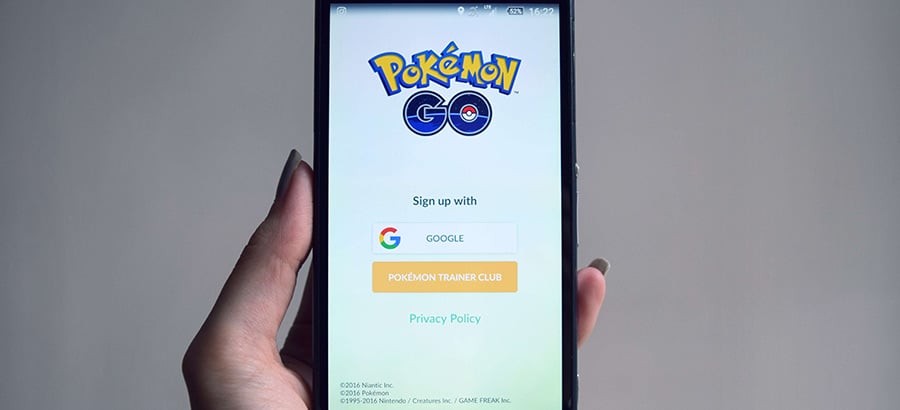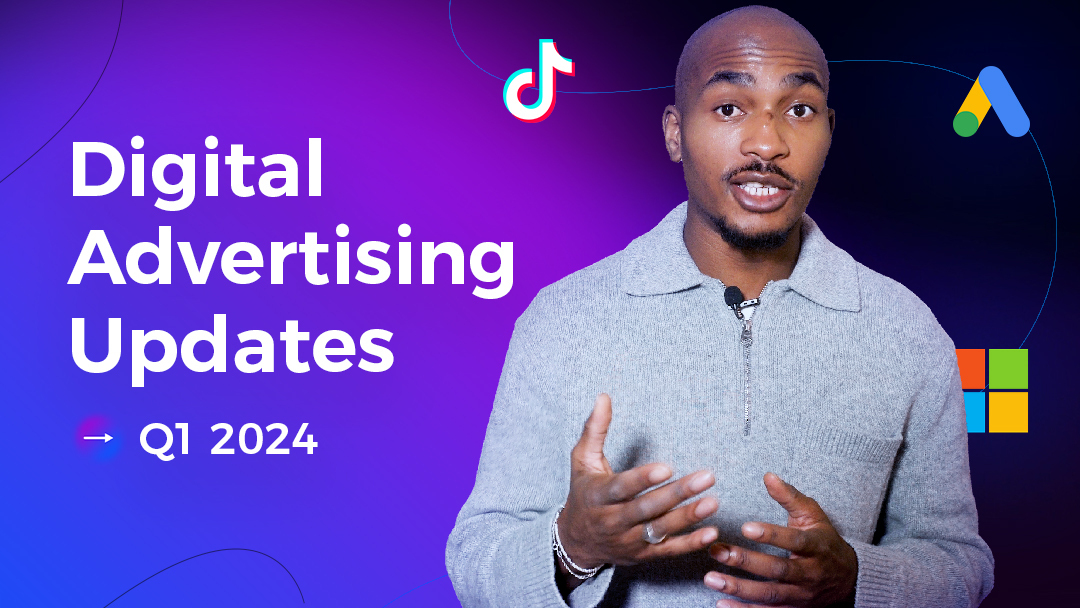Digital out of home advertising (DOOH) is on the rise and has been for quite some time. A report by Upbeat suggests the global DOOH market will hit $8.3bn by 2023. But out of home is nothing new. In fact, it’s the oldest form of advertisement in the book. As marketers, we’re sure that you are aware of this and are probably even using this channel. Yet, could you do better?
Here are some useful suggestions for making the most of DOOH in your marketing strategy.
1. Omnichannel with DOOH
Mobile advertising. ‘Not this again’ I hear you cry! Yes, we all know that mobile is the future and we all know the statistics on how many man-hours are spent looking at that tiny little screen. But we’re telling you to think big. ‘Desktop you mean?’ No, THINK BIGGER.
By all means, have an online advertising strategy for social and display advertising, but why not integrate that with DOOH? We have seen very little omnichannel advertisements that use these channels seamlessly. Though the ones that we have seen have been spectacular.
Take the campaigns of Jurassic World and Ghost Busters as examples. They used physical, social, and DOOH to create a completely immersive experience in London train stations. Now, we are not suggesting that you watch those movies (they were terrible) or that you have the budget for such a project. However, the takeaways remain relevant to you and your brand.
There’s no need to be restricted to one campaign for mobile, desktop, and DOOH either. All channels should work in harmony and the technology will soon exist to do so. Take control and create something that engages across devices. As long as it’s not a botched remake of a classic movie…
2. Dynamic creative and DOOH
DOOH still lags woefully behind the rest of the digital marketing field when it comes to engaging creative. Despite evidence that points to the contrary, brands are still opting for static images that lack relevance.
The fact of the matter is that 98% of the population sees an out of home ad each week in the UK. Research from Virtuo City revealed that using contextually relevant DOOH campaigns increases awareness for campaigns by 18%. Yet, marketers across the globe are forgetting the importance of relevance in their DOOH campaigns.
So how can you go about doing that? Let us break it down for you.
Location, location, location
Not just a popular daytime UK TV property programme, it’s also an incredibly important factor in your DOOH strategy.
Take the Baywatch movie campaign as an example. Using RSS feeds for 16 of the coldest cities they advertised the movie with the tagline, “Frostbites. Summer is coming.” If you can use location data to produce bespoke messages then why not apply geo-targeting to your DOOH campaign?
Ok but you’re not advertising a movie with attractive people in swimsuits. What else could you offer? Research shows that locating a screen nearby to your store is an excellent way of driving traffic to your physical location. Guinness used out of home to direct fans to pubs that served the drink during the RBS 6 Nations. Think that’s cool? The adverts would automatically update if the nearest pub filled up and redirect thirsty fans to the next closest.
There you have it. You may not be selling a sexy movie or a rugby fan’s favourite pint, but you can still use location data to target your creative. Lead the right audience with geo-targeting.
Weather and DOOH
This has been a hugely popular form of dynamic creative in recent years. No matter where you are, the weather is a constant in determining your daily activities or for small-talk with your Grandparents. It’s no different for your advertising campaign.
Take Smirnoff’s summer cider adverts as an example. Their advertising would only appear when temperatures reached above 20 degrees in UK cities – a rare event for those who live there. Nevertheless, it makes perfect sense to marry your weather dependent product to surrounding temperatures.
They’re not the only ones doing this either. eBay and B&Q have different sets of ad creative that show depending on local conditions. Weather can be relevant to your brand but to your customers too, so bear it in mind for your next campaign.
To summarise, the weather isn’t just a dull form of small-talk, it’s also powerful marketing data when used in the right way.
Use traffic to drive ads
Commuter traffic. Bound to put any of us in a bad mood, until now. As marketers, dynamic creative and congestion go hand in hand.
The opportunities for a captive audience are incredible. In Sweden commuters spend on average 21 hours in congestion per year, in the UK this rises to 45. When you consider how brief viewer engagement is with popular forms of advertising like TV, then DOOH is an even more attractive option.
Many brands have already clocked onto this. Take McDonalds and Audi, they use dynamic content that responds to traffic conditions. Real-time data from Google Traffic API is used to display relevant geo-targeted creative. For example, at rush hour the McDonalds advert simply says ‘there is a light at the end of the tunnel’ alongside the logo.
Placing your advert in the right place, at the right-time, in front of the right people, has no better example than dynamic DOOH in commuter traffic.
Innovation with dynamic creative
There are some really exciting developments in DOOH. We’ve covered some of the more common ones that are easy to apply to your strategy. However, as marketers, our job is to constantly innovate and think of new ways we can delight our customers.
One of the benefits of DOOH over online is that it can react to its immediate physical surroundings. Swedish pharmacy brand, Apotek, has been leading the way for years in innovative campaigns. In one of their most recent campaigns, they used a sensor that activated the display when cigarette smoke was detected. A video of a man coughing within an advert for nicotine patches at the nearest store would then follow. This advert took into consideration its physical surroundings and location data to provide hyper-targeted, hyper-relevant, advertising to the right audience. And hopefully saved a few lives too.
However, don’t be restricted by the examples we’ve shown here. Be inspired. Truly effective advertising challenges the status quo and your DOOH campaign should be no different.
3. In-store digital signage
Advertisers are turning to DOOH for in-store advertising too. You may be thinking why in-store? The goal is to get them in-store, so why advertise when they’re already there? Digital signage is an excellent way of directing traffic and securing that final sale.
Take Scandinavian department store Åhléns as an example. They used digital signage during the Christmas period to display relevant advertisements for discounts and special offers in-store. This guided customers already in store to offers that they might have otherwise overlooked.
What is more, in a study undertaken by the IAB, it found that 68% of shoppers were exposed to outdoor ads in the same half an hour of purchase. Meaning that if a brand was to target and retarget within the store itself, then the opportunities for return on investment are much improved.
Think of it like this. Your store is your website homepage. Your brand collects data on your target audience and then uses retargeting and online advertisement to guide them through the funnel. Why should your in-store experience be any different? The technological solutions are out there for your in-store DOOH advert. Take the opportunity to deliver real results for your brand.
4. Analytics
The lack of data with DOOH has been an obstacle to the channel in the past. Yet, now it is possible to collect data to target the right audience and display ads that are relevant to your customers.
Historically marketers might be dissuaded from DOOH for lack of measurable variables. But with the rise of new software, it is now possible to measure who is consuming your content, when, and for how long.
Standardised metrics mean that it has become far easier to integrate DOOH with other formats. And with technology such as creative management platforms being used for ad production, seeing campaign performance across channels in one place will soon be possible. Apply this strategy effectively using dynamic creative and you may be surprised at the results.
Conclusion
There you have it. DOOH doesn’t, and shouldn’t, stand alone in your marketing strategy. By taking into account external factors and your target audience you can be inventive with your creative. Integrate location, weather, traffic and data to maximise your results. If you apply all the practices that you would normally apply to your online marketing, and more, then tangible and real results are there for taking.







